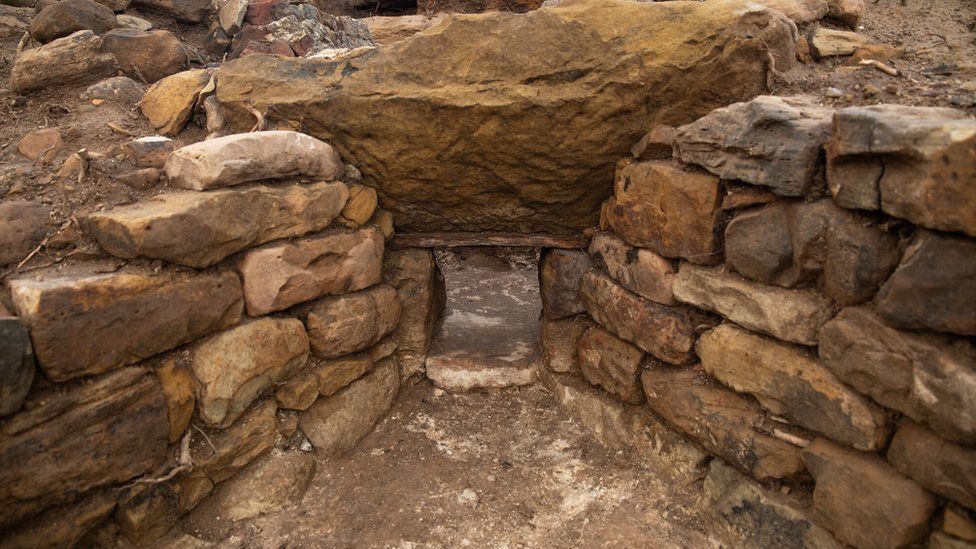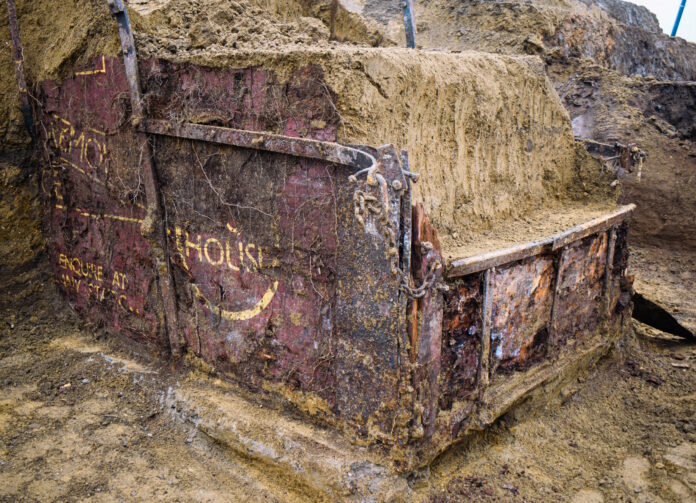A remarkable archaeological discovery was recently made in Antwerp, Belgium, where a 90-year-old train container from the London and North Eastern Railway (LNER) was unearthed. This find, linked to the early days of British rail transport, offers a fascinating glimpse into the past. Unearthed during excavation work for the Oosterweel Link project, this rare artifact tells a story of historical significance despite its unfortunate demise during recovery.
The Discovery in Antwerp

The train container was discovered as part of an excavation along the Oosterweel Link route, a significant infrastructure project aimed at completing the R1 Antwerp Ring Road by connecting the highway with tunnels under the Scheldt River and Albert Canal. The container, which had been buried in the Noordkasteel, a 19th-century fortress that was converted into a recreational park in 1934, was found placed on a concrete slab embedded into an embankment filled with sandy soil. The mystery surrounding its burial in Antwerp, and the exact time of its internment, remains unsolved.
Historical Background of British Train Containers

In the early 19th century, England saw the use of simple square boxes for rail transport. However, the rapid growth of the rail industry led to the adoption of standardized containers, which facilitated easier loading and unloading processes. Among the four major British railway companies, LNER played a significant role in the development and use of these containers.
The first LNER containers, introduced around 1930, were painted in a reddish-brown hue. This distinctive color was only used for a few years before being replaced by the iconic blue that became synonymous with LNER. The red containers, such as the one unearthed in Antwerp, were only in service for a short period, making this discovery exceptionally rare.
Details of the Unearthed LNER Container

The unearthed container was identified by the number BK769, marking it as a furniture container with a capacity of four imperial tons (8,960 lbs), built around 1935 or 1936. These containers functioned much like modern moving pods, designed to be loaded onto trucks or flat train wagons for the transportation of furniture from one residence to another. What makes this find even more remarkable is that it was the only known surviving example of the red oxide LNER moving container.
The Fate of the LNER Container

Despite the excitement surrounding the discovery, the condition of the container proved to be its undoing. The wooden walls, which had been buried for decades, were too unstable to withstand the excavation process. As the soil was removed, the walls collapsed, causing the container to disintegrate almost completely. Unfortunately, this rare piece of history could not be preserved, and what remained of it was lost to time.
Conclusion
The unearthing of the 90-year-old LNER train container in Antwerp provides a rare glimpse into the early days of British rail transport, even though the container itself could not survive the excavation. This discovery not only highlights the historical significance of rail transport but also underscores the challenges faced in preserving such artifacts. As we continue to explore and uncover the past, each discovery, no matter how fleeting, adds to our understanding of history and the way it has shaped the world we live in today.
